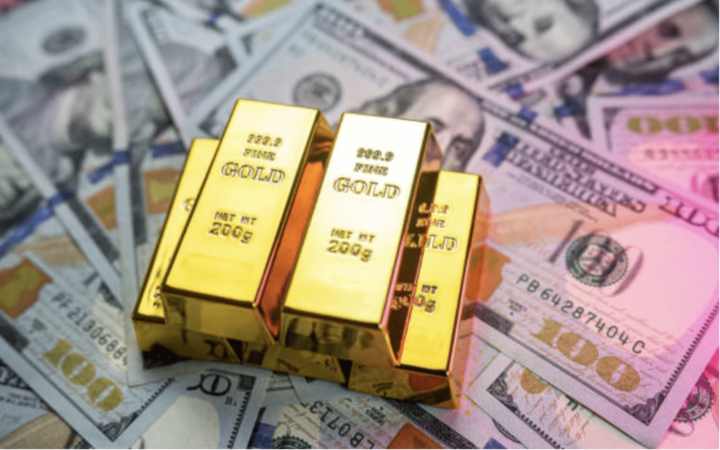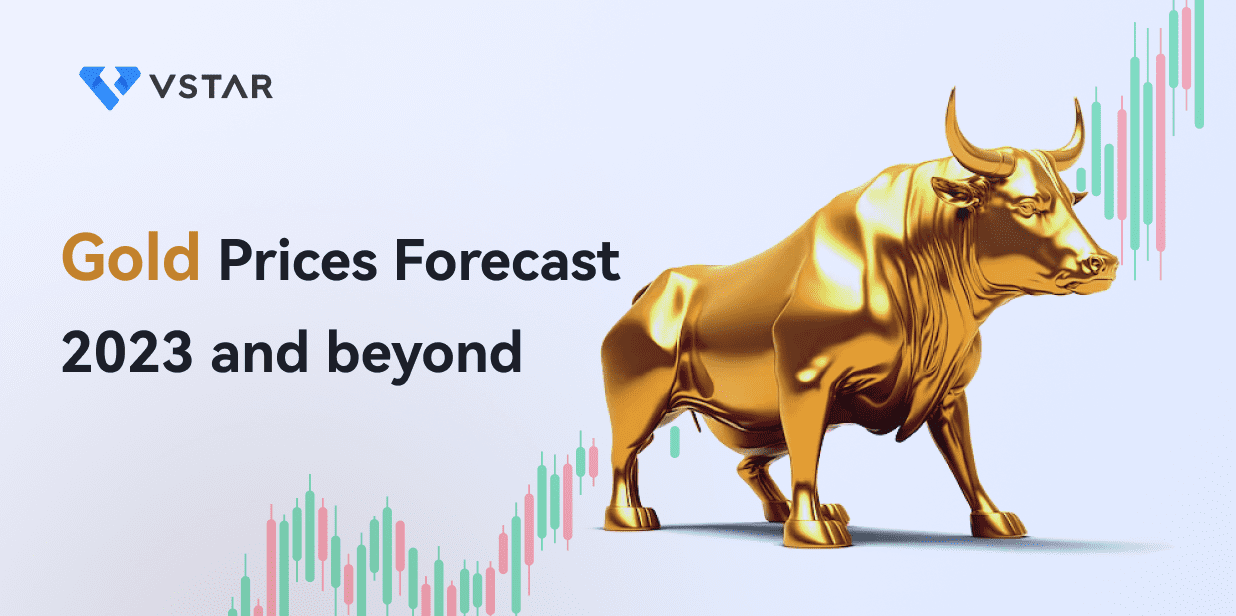Gold has long been valued as a precious metal and a stable store of value. Its unique properties, scarcity and durability make it a time-tested safe haven investment. Throughout history, gold has served as a hedge against economic uncertainty and inflation.
When traditional currencies and markets experience volatility, investors often flock to gold to protect their wealth. Gold is attractive as an investment because it tends to hold its value over the long term.
Unlike paper money, gold has an intrinsic value and cannot be devalued by unlimited printing. As global inflation concerns grow, gold's appeal as an inflation hedge and alternative currency increases.
Many investors allocate a small portion of their portfolios to gold as a diversifier and to offset risks in the stock, bond and real estate markets. Gold offers an uncorrelated asset that can provide stability in times of market turmoil.
While its price fluctuates, gold's role as a historically stable alternative asset continues to attract investors today.
Recent Gold Price Performance
Gold prices are strongly influenced by the US dollar. A weaker dollar tends to boost gold prices, while a stronger dollar puts downward pressure on prices.
In 2019, gold traded in a range of $1,353 to $1,601 per ounce, ending the year at around $1,515. Lower demand in India contributed to a price slump in late 2019.
Prices rose to a record high of $2,063 in August 2020 amid pandemic stimulus and safe-haven buying, before falling back to around $1,840 by November 2020 following the Pfizer vaccine news.
After rebounding to near $1,900 in early 2021, prices drifted lower to around $1,775 by mid-2021 on a stronger dollar and falling Indian demand, before rebounding back above $1,800 by late 2021.
In early 2022, gold spiked to nearly $2,075 on geopolitical tensions between Russia and Ukraine before falling to around $1,615 in September 2022 as the Fed hiked rates aggressively.
Gold rebounded to over $1,800 in late 2022, but underperformed other precious metals such as silver and platinum for the year.
Overall, gold has experienced significant price volatility in recent years, driven by dollar movements, global growth concerns, inflation/stimulus and geopolitical events. Its performance has been uneven relative to other assets.

Gold Price Performance in 2023
After hitting record highs above $2,000 an ounce in August 2020, driven in part by pandemic uncertainty, and as August is often a strong month for gold as jewelers stock up ahead of major fall festivals and weddings in key markets such as India. This year, however, the usual seasonal tailwind may be missing. Factors such as high inflation, weakening currencies, and market volatility, which tend to boost gold prices in August, are already priced in. In addition, further Fed rate hikes could limit gains. So will gold prices fall in the near term after a summer rally? Looking ahead, forecasts are mixed.
Gold prices rose more than 3% in July as a weaker dollar and a jump in inflation expectations provided support. Historically, August has been a positive month for gold as investors anticipate volatility in the fall markets and jewelers stock up ahead of major holidays. However, the typical August tailwinds may be missing this year. Yields are under upward pressure, equities remain buoyant, and gold demand in key markets such as India and China remains weak amid economic hurdles.
But while the usual seasonal drivers are absent, mounting economic concerns and market volatility could still benefit gold in the coming months. Persistently high inflation, recession fears and geopolitical tensions could continue to rise, making gold an attractive hedge. So while gold may not see the robust August returns of previous years, its safe-haven appeal amidst market risks still points to investor interest and price support ahead.

Gold Price Prediction & Forecast for 2023 and Beyond
Will Gold Price go down in 2023?
Gold prices could face headwinds in August as key supports appear to be missing. High domestic prices and weak economies in key markets such as China and India could reduce physical demand during the normally busy festival and wedding season. With speculative interest also limited at current levels, prices may struggle to gain momentum without a fresh catalyst to drive safe-haven inflows. Gold prices could consolidate or retreat in the near term as a result of this potential softening in both physical and investment demand.
Equities may weather seasonal volatility in August, buoyed by strong Q2 earnings. Despite deteriorating fundamentals, weak internals and high retail sentiment. This reduced need for hedging may partly explain the low implied volatility. If equities continue to defy risk, there may be less demand for gold as a safe haven.
However, the low volatility environment allows for cheap hedging via out-of-the-money options not seen since the global financial crisis. If investors do choose to hedge, the availability of low-cost alternatives could dampen gold demand from those seeking protection.
With forecasts for higher inflation and economic growth, Japanese capital repatriation, and the US Treasury's need to raise up to $1.3 trillion, longer-term US Treasury yields may rise in August. Rising real yields due to falling inflation could reduce investment demand for gold. However, analysts have noted that August returns are seasonally strong for gold despite yields and the dollar. This puts pressure on yields to rise significantly to disrupt gold's seasonal trend.
Why gold prices may rise in 2023?
The Bank of Japan's easing of its yield curve control policy could increase yield volatility and weaken the US dollar against the Japanese yen. A weaker dollar tends to support gold.
Longer-term US yields could rise as a result of the BOJ's policy change. However, the yen remains attractive on the back of strong Japanese equities and economic recovery.
Higher volatility and a weaker dollar are expected to boost gold returns in August, despite the potential for higher US yields.
Futures positions on the COMEX are not overextended and ETF outflows have slowed, leaving room for investment inflows to increase given the right catalysts. A weaker US dollar or increased market volatility could prompt more investors to allocate to gold for diversification and as a safe haven. This additional investment demand could support gold prices.
While a second wave of inflation in the U.S. economy may not materialize immediately, leading indicators such as rising manufacturing PMIs, increased small business pricing plans and higher single-family housing permits point to rising inflationary pressures. Historically, high inflation environments tend to come in waves. As inflation heats up again, gold should benefit as a hedge against rising prices.
Overall, several factors are converging that could help drive investment flows into gold and provide a tailwind for gold returns in the near term.

Gold Analysis Today - Examining the Key Gold Market Factors for 2023 and Beyond
Economic Projections and Monetary Policy Expectations
Economic forecasts and monetary policy expectations will be key drivers of the gold price outlook going forward. Forecasts of higher inflation could boost gold's appeal as an inflation hedge. However, more aggressive interest rate hike projections from the Federal Reserve could counteract this and weigh on gold prices.
Modeling the impact of inflation and interest rate changes on gold prices can provide insight into the relative strength of these competing forces. If inflation is expected to rise faster than interest rates, gold would likely benefit. But if rate hikes are expected to outpace inflation, gold could struggle.
Close monitoring of Fed and other major central bank policies will be critical. The Fed's plans for unwinding its balance sheet, quantitative tightening and future rate hike messaging will influence rate hike expectations. Dovish pivots by central banks could limit rate hike forecasts and boost gold. On the other hand, hawkish pivots could lead to higher rate projections and limit gold's upside.
Overall, analyzing monetary policy shifts through the lens of inflation and interest rate modeling will be key to developing an accurate gold price outlook. The interplay between inflationary pressures and the pace of central bank rate hikes will determine whether conditions are favorable for gold or not.
Geopolitics and market risk
The ongoing Russia-Ukraine conflict and rising tensions between China and Taiwan are geopolitical risks that could support gold prices. As a traditional safe-haven asset, gold tends to benefit when geopolitical tensions rise as investors seek safety. Continued escalation and uncertainty surrounding these conflicts could lead to further inflows into gold.
Monitoring gold's performance during periods of market turmoil will shed light on its current safe-haven appeal. Gold is often bought as a hedge against stock market volatility. When gold rallies during risk-off periods for equities, it signals robust safe-haven demand. However, when gold falls along with equities, its safe haven appeal may be waning.
Geopolitical flare-ups that contribute to financial market volatility, such as aggressive sanctions, military escalation, and supply chain disruptions, could periodically boost gold prices. The magnitude of gold's gains will depend on the extent of the market turmoil and whether it is sustained.
Overall, an analysis of gold's historical performance during geopolitical crises will help set expectations for how event risk could impact gold's outlook going forward. Its safe-haven status remains a key price driver in turbulent times.
Currency market fluctuations
U.S. Economic Growth Outlook - Stronger growth tends to boost the dollar and weigh on dollar-denominated gold. Weaker growth tends to have the opposite effect.
Divergent monetary policies - If the Fed is more hawkish than other central banks, the dollar strengthens. A dovish Fed policy relative to others weakens the dollar.
Safe-haven flows - Geopolitical uncertainties sometimes spur safe-haven flows into the dollar, boosting its value. This can put pressure on gold.
US fiscal and trade deficits - Larger deficits tend to weaken the dollar over time, which can support gold. Improving fiscal/trade balances strengthen the dollar.
Treasury yields - Rising yields make the dollar more attractive relative to other currencies, potentially limiting gold. Falling yields have the opposite effect.
Positioning - Heavy speculative long positioning in the dollar may signal overbought conditions due for a reversal, which would favor gold.
Analyzing these dollar drivers and their historical correlation to gold prices can help predict when dollar moves may help or hinder gold's performance. Overall, dollar weakness tends to benefit gold, while dollar strength weighs on prices.
Central bank gold purchases - a key driver
Central banks have been buying gold at record levels in recent years, led by China, Turkey, India and others seeking to diversify their reserves away from the U.S. dollar.
According to the World Gold Council, central bank gold purchases reached 673 tons in 2022, the highest annual total since 1967. In the third quarter of 2022 alone, demand reached nearly 400 tons, more than double the previous quarterly record.
This was the ninth consecutive quarter of net buying, as central banks increasingly turn to gold for safety amid high inflation. The 2022 total of around 700 tonnes marks the largest annual purchases since the end of the gold standard era.
In November, China disclosed its first central bank gold purchases since 2019 - 32 tons acquired at around $1,650 per ounce. This new transparency underscores China's strategic accumulation.
Many analysts expect central bank demand to remain robust in 2023 as inflation concerns persist. This trend was a key driver behind the upgraded gold price prediction for 2022.
With monetary authorities set to expand their gold buying programs, central bank buying is a key fundamental supporting higher prices going forward.
Limited outlook for gold mine supply
Mine production accounts for approximately 75% of annual gold supply, making it a key determinant of market equilibrium. However, global mine production has been lackluster in recent years, and total production appears to have peaked in 2018.
According to the World Gold Council, total gold supply in the third quarter of 2022 was 1,215 tonnes, an annual increase of just 1%. They warn that "significant new discoveries are becoming increasingly rare," even though mine production has increased since 2008.
High-quality, profitable gold mines are becoming harder to find. And rising inflation continues to erode mine economics, making new projects difficult to justify.
With maturing mines and few major discoveries, analysts expect annual production growth to remain subdued going forward. This supply constraint should support higher gold prices as demand expands.
The stagnation in mine production reinforces the bullish case for gold as sources of new supply tighten.

Monetary outlook supportive for gold
The Federal Reserve has been aggressively raising interest rates, but is expected to reverse course in the coming years as the economy slows. Some analysts expect rate cuts to begin as early as late 2023 as the effects of COVID-19 fade and recession risks rise.
Lower interest rates would increase the appeal of gold because it pays no interest. The reduced opportunity cost makes gold more attractive relative to income-producing assets when interest rates fall.
Interest rates are an important driver of investment demand for gold. Low interest rates increase gold's appeal as a store of value and a hedge against inflation. Investors tend to prefer non-yielding gold when interest rates are low, driving up prices.
With the Fed expected to pause and eventually reverse rate hikes, the monetary outlook is becoming more supportive of gold prices. This is a key bullish factor that could drive renewed investor interest.
US Dollar Weakness Another Tailwind for Gold
The US dollar and gold typically have an inverse relationship, with dollar weakness tending to boost gold prices.
The recent dollar depreciation is expected to continue into 2023, which could provide further upside for gold.
Analysts at Wells Fargo see the dollar remaining strong in H1 2023 before weakening in H2 as markets anticipate a Fed pivot.
According to FXStreet analysts, "As the Fed completes its tightening cycle and the US growth outlook deteriorates, we expect the dollar to enter a period of cyclical depreciation and decline against most G10 and EM currencies throughout next year."
Widespread dollar weakness is forecast due to the impending end of Fed tightening and growth concerns. This dollar weakness provides a bullish setup for gold.
As the dollar falls from its recent highs over the Fed's policy transition, it is likely to boost investor appetite for gold as an alternative asset.

Gold Price Prediction and Forecast
With inflation and interest rates remaining key determinants, we surveyed prominent analysts and banks to compile expert predictions on where gold prices are likely trending in 2023.
Inflation and interest rate decisions continue to be key drivers
While analysts largely agree on the key factors that will drive or restrain gold prices in 2023, their predictions for where gold will end the year vary.
Bearish
The World Bank sees gold ending 2023 at $1,700 per ounce, assuming continued US interest rate hikes. The Australia and New Zealand Banking Group is even more pessimistic, forecasting gold at $1,650.
The Canadian bank sees the precious metal falling to $1,575 by the first quarter of next year.
Fitch and Société Générale are the most bearish, predicting that price of gold will fall to $1,600 and $1,550, respectively, by the end of 2023.
T.D. Securities is also bearish, expecting gold to fall to $1,575 in the first quarter of 2023 before recovering to $1,800 by year-end and $1,900 in 2024.
Bullish
In contrast, Bank of America strategist Michael Widmer sees potential for gold to reach $2,000/oz in 2023, as he expects the Fed to end tightening in March and start cutting rates by the end of 2023.
Commodity analysts at Commerzbank also expect the Federal Reserve to cut interest rates by the end of 2023, although they anticipate some short-term struggles for gold as markets adjust to a final rate above 5%.Commerzbank sees price of gold reaching $1,850 an ounce by the end of 2023.
"After the expected final rate hike in March, a period of steady rates should follow before the Fed cuts again later in 2023 amid weak growth and easing inflation. This Fed pivot should lift gold in H2, as inflation falls significantly and the US enters a recession in early 2023. Gold should also benefit from a weaker dollar, which our strategists forecast," the German bank said.
Analysts forecast end-2023 interest rate cuts potentially boosting gold prices
UBS analysts expect US interest rates to trend slightly lower by the end of 2023 and predict a positive gold price trajectory to $1,900 per ounce. Deutsche Bank has a similar outlook, also predicting that gold will reach $1,900 by the end of 2023.
Meanwhile, Reuters predicts a more moderate gold price of $1,750 by the end of 2023. But ABN Amro joins the Swiss banks in forecasting $1,900 as well. As in 2022, euro gold prices could diverge significantly from dollar prices based on continued dollar strength into 2023.
Swiss Asia Capital and Saxo Bank are among the most bullish with optimistic gold price forecast for 2023, along with Bank of America.
Swiss Asia Capital analysts see price of gold potentially rising to $4,000/oz in 2023 amid volatile markets and recession fears. Their latest gold price prediction for 2023 sees gold reaching $2,500-$4,000.
They explain that recessions in early 2023 could lead to slower central bank rate hikes, which would immediately boost gold's appeal. Since gold is the only asset held by all central banks, slower hikes would make it more attractive, they added.
Ole Hansen, head of commodity strategy at Saxo Bank, doesn't expect the Fed to control inflation. He said a recession and Fed hikes into weakness strengthen gold's upside potential, forecasting a spike in the gold price to $3,000 in 2023.

Other 2023 Gold Price Forecasts
Many analysts see gold production increasing in 2023 as prices remain well above mining costs. Increased economic uncertainty and persistent inflation could also support higher gold prices.
Wallet Investor has a neutral outlook and predicts that gold will trade around $1,980 in Q3 2023 and end the year at $1,971. They expect consolidation near $2,000 rather than new highs.
Long Forecast has a neutral forecast of $2,076 for gold by the end of 2023. Their AI-driven model sees prices potentially reaching $2,180 in December 2023, which is a moderate upside scenario rather than a very bullish outlook. Overall, Long Forecast does not expect gold to exceed $2,200 next year without a significant shock or crisis. Their forecast is in line with other analysts who see steady but unspectacular gains for gold in 2023.
Coin Price Forecast has a neutral to slightly bullish outlook for gold in 2023. They expect prices to start the year around $1,830 before climbing to $1,962 by mid-year, a gain of 7%. By the end of 2023, they see gold reaching $2,148, which would be an annual gain of 17%. While Coin Price Forecast's projection is for decent returns, it does not imply a surge past $3,000 absent an unexpected crisis or risk event. Their forecast is in line with other analysts who see a steady but moderate rise in gold prices in 2023, rather than a dramatic breakout.
Trading Economics has a neutral to slightly bullish outlook for gold in 2023. They forecast prices reaching $2,000 per ounce by the end of Q3 2023 and rising to $2,053 in 12 months, which would be a year-end 2023 target. This represents steady gains, but does not imply a spike above $3,000 without a major shock to disrupt the markets. Overall, Trading Economics is in line with other analysts who expect gold to rise moderately next year, but not to new record highs, barring an unexpected crisis scenario. Their forecast mirrors the consensus view that gold will consolidate near $2,000 in 2023, with upside capped barring extreme events.
Will gold price rise to $3000 in 2023?
The $3,000+ prediction is an outrageous forecast to begin with.
- A second wave of inflation is possible, but unlikely to get out of control given central bank policies.
- Stagflation could make it difficult to reduce inflation, but the Fed's stimulus during the recession probably won't expand the broad money supply and spur high inflation again.
- Quantitative easing and recessionary interest rate cuts may not lead to significant commercial bank credit expansion.
- Without an acceleration in broad money growth, another bout of high inflation is unlikely.
So while inflation risks remain, the forces that could realistically drive gold to $3,000+ in 2023 appear limited. A spike of this magnitude seems unlikely this year based on economic conditions and the political outlook.

Gold Fundamental Forecast 2023
Many analysts remain constructive on gold for the remainder of 2023, despite some potential near-term headwinds. According to previous forecasts, gold's upside potential currently outweighs its downside risks. Sentiment and valuations in equities look stretched, even though equities have so far withstood several challenges thanks to underlying support. Moreover, while sentiment has fluctuated recently, significant economic concerns remain.
The recent downgrade of the U.S. debt rating and the projected increase in government borrowing underscore the rising risks of recession. This adds to other worrisome indicators, including
- Declining demand for commercial and industrial loans
- Widening credit spreads
- Slumping leading economic indicators
- Falling state and local tax revenues
- Stagnant real wages
- Rising bankruptcy filings
- Slowing Retail Sales
- Rising S&P 500 Interest Expense
July macro data and moderate inflation numbers suggest that the economy is holding up well for now. This likely contributed to ETF outflows and weaker coin sales in July as hopes for a soft landing grow.
The Fed's final rate hike of the cycle in July sparked optimism that the tightening phase may be nearing an end without severely hurting growth. However, risks remain as the full impact of the hikes is still unfolding.
Assessment of upside and downside risks
Upside Risks
- Persistently high inflation undermines confidence in fiat currencies and prompts a flight to gold as an inflation hedge.
- Geopolitical tensions such as the Russia-Ukraine war escalate, spurring safe-haven demand.
- Equity markets experience increased volatility or a significant correction, driving investors to the stability of gold.
- Real bond yields remain negative for extended periods due to high debt and deficit spending.
- Demand spikes from central banks and institutional investors rebalancing to gold.
- Supply disruptions from major gold producing regions due to geopolitical conflicts.
Downside risks
- Central banks tighten faster than expected, pushing up real yields.
- The US dollar continues to strengthen, weighing on dollar-priced gold.
- Inflation and economic growth data improve significantly, reducing demand for safe-haven assets.
- Speculators liquidate gold futures positions as technical support levels fail.
- Consumer demand falls in India/China as lockdowns or recession hit those economies.
- Mine production rises significantly as new major discoveries are made.
While there are risks on both sides, current fundamentals appear to be skewed to the upside for gold prices on a 6-12 month horizon. In the short term, however, downside risks could prevail if data remains strong.
Investment Implications and Portfolio Strategy
Gold can play an important diversification role in portfolios, helping to manage risk during periods of market turmoil. A 5-10% allocation is generally recommended.
Timing entries and rebalancing is challenging, so a long-term strategic approach with regular rebalancing is prudent. Buying during periods of weakness can enhance returns.
Using dollar cost averaging, gold mining stocks and instruments such as ETFs can help manage volatility and risk.
Gold mining stocks offer leverage to gold prices, but come with higher risks. Selecting quality majors/mid-tier companies with solid fundamentals is key.
Gold-backed blockchain tokens and lending/yield opportunities also now offer portfolio diversification but require careful due diligence.
Gold's near-term outlook is cloudy if the economy remains resilient. But negative real yields, inflation concerns and geopolitical tensions favor long-term strategic positions.
Reducing allocations at sharp momentum-driven peaks and buying at significant lows can enhance portfolio performance over time.
Maintaining a 12-24 month strategic outlook, rebalancing across gold instruments, and managing risk is more prudent for most investors than chasing short-term price movements.
Overall, maintaining a core strategic allocation to gold remains attractive for long-term diversification. But a tactical approach based on economic and market cycles can potentially enhance results further.
Conclusion
Overall, the chances of gold rising above $3,000 in 2023 appear slim given the economic and political outlook. While there are risks of higher inflation, runaway price growth seems unlikely without a significant expansion in the broad money supply. The Fed's ongoing tightening and balance sheet reduction make aggressive stimulus unlikely, even in a recession.
The key factors to watch are real interest rates, dollar trends, investment demand and central bank policy. But these factors alone seem incapable of driving gold above $3,000 without a profound shock or financial crisis. In the absence of such an event, gold prices in the $1,600 to $2,000 range look more reasonable for 2023.
Gold still offers portfolio diversification and a hedge against tail risks. But its upside potential next year looks limited compared to the high inflation backdrop of 2022. As major economies move past peak inflation and into slower growth, gold's investment appeal may also diminish somewhat. While no asset is immune to short-term volatility, gold's role as an inflation hedge and safe haven is unlikely to drive it above $3,000 in 2023.





